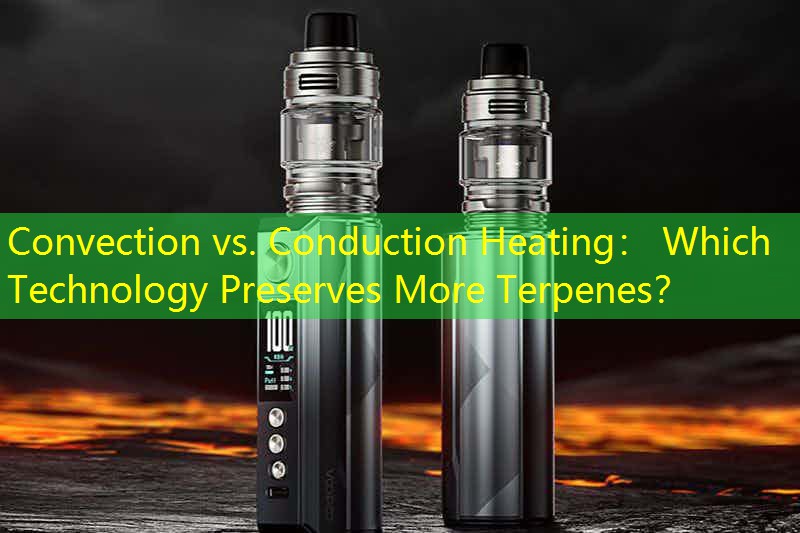Presentació
The world of herbal vaporization has evolved dramatically with the advent of various heating technologies. Entre aquests, La calefacció per convecció i conducció ha guanyat una atenció important, especialment pel que fa a la seva capacitat de conservar els compostos de sabor delicat coneguts com a terpens. Aquest article oferirà una visió en profunditat de la convecció vs. tecnologies de calefacció per conducció, valorant les seves característiques, Experiències dels usuaris, comparacions competitives, Pros i contres, i la demografia objectiu.
Heating Technologies Explained
Convection Heating
Convection heating uses hot air to heat the herbal material indirectly, permetent un control uniforme i precís de la temperatura. Aquest mètode garanteix que els compostos actius, inclosos els terpens, es vaporitzen a temperatures òptimes sense cremar el material. Els usuaris agraeixen la convecció pel seu vapor net i saborós, which can preserve the unique profiles of various strains.
Calefacció de conducció
En canvi, conduction heating relies on direct contact between the heating element and the herbal material. While this method is often quicker and can provide a robust vapor experience, it risks overheating, potentially degrading terpenes and other volatile compounds. Users generally find conduction devices to be more straightforward and often less expensive, but they may sacrifice flavor integrity for speed.

Característiques del producte
Both convection and conduction vaporizers come with a range of features, including temperature control, portability, and battery life. Convection devices generally feature more advanced technology that facilitates precise temperature adjustments. En canvi, conduction models may offer simplified interfaces, making them more user-friendly for casual users.
Experiència d'usuari
The user experience varies significantly between the two technologies. Convection heating often requires a learning curve to master the perfect draw and temperature settings. No obstant això, users report that the payoff is a richer, more nuanced flavor. Al revés, conduction users appreciate the ease of use but might notice diminished flavor profiles due to uneven heating.
Competitive Comparison
In the competitive landscape, brands such as Volcano and Firefly lead in convection heating, while PAX and G Pen excel in conduction options. Convection devices typically come at a higher price point, reflecting their superior flavor-preserving abilities. Yet, conduction vaporizers often appeal to budget-conscious consumers seeking simplicity and convenience.
Pros i contres
Convection Heating Pros
– Superior terpene preservation
– Even heating
– Greater flavor depth
Convection Heating Cons
– Higher cost
– More complex to use
Conduction Heating Pros
– Quick heat-up time
– User-friendly
– Generally less expensive
Conduction Heating Cons
– Potential for uneven heating
– Risk of flavor degradation
Anàlisi de l'usuari orientat
Target demographics for convection vaporizers typically include connoisseurs and discerning users who prioritize flavor and quality. These individuals are often willing to invest more in a premium product. En canvi, conduction devices tend to attract more casual users or those new to herbal vaping, as they offer an accessible entry point without the need for extensive knowledge about temperature control or vaporization techniques.

Conclusió
En resum, the choice between convection and conduction heating largely depends on individual preferences and priorities. Convection provides a superior experience for those seeking to preserve terpenes and enjoy rich flavors, while conduction offers simplicity and speed for casual users. Understanding these differences is crucial for making an informed decision in the dynamic world of herbal vaporization.







